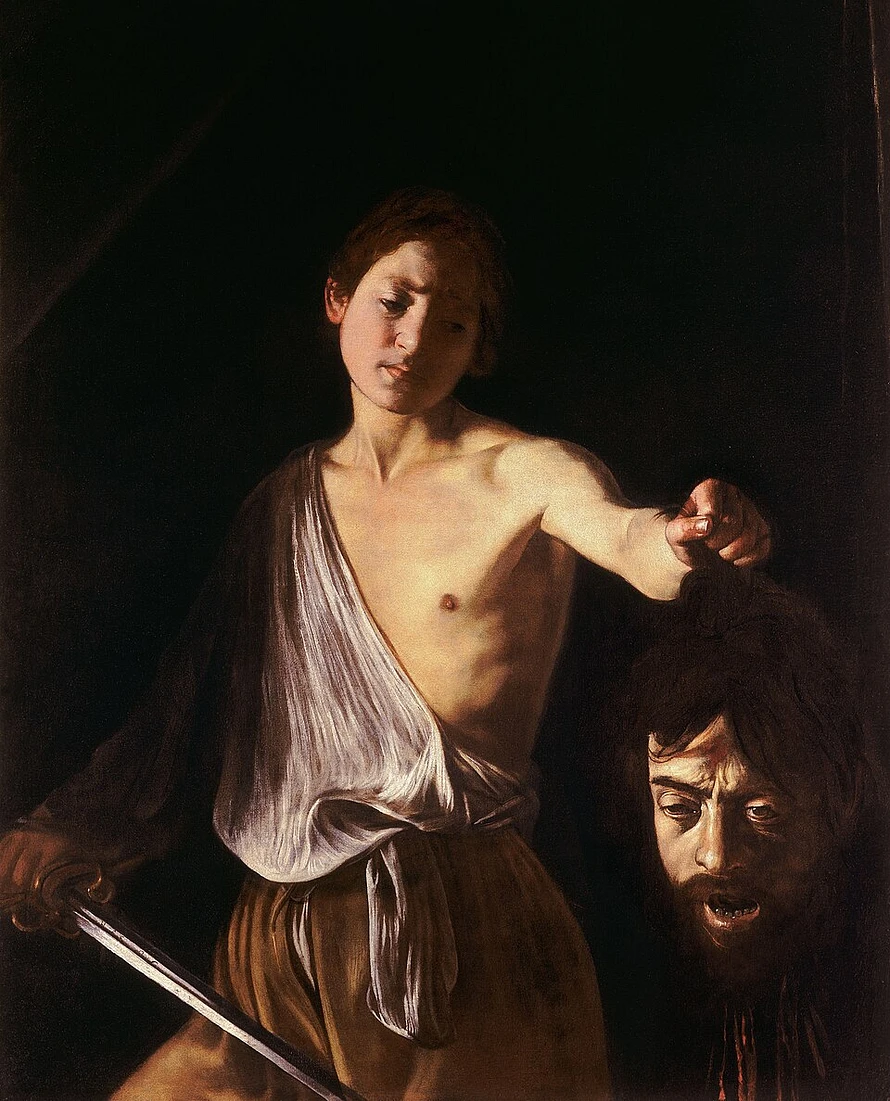Caravaggio’s “David with the Head of Goliath”: A Masterpiece of Guilt and Glory
When we think of the biblical tale of David and Goliath, we usually picture triumph: the young underdog conquering the fearsome giant with nothing but faith and a slingshot. But Caravaggio—Baroque art’s undisputed bad boy—saw something else in the story. Something darker. More personal.
Painted around 1610, David with the Head of Goliath is more than a depiction of victory. It’s a haunting confession, a psychological drama in oil. Instead of a jubilant warrior, Caravaggio gives us a sorrowful, almost reluctant David. His expression is one of pity, not pride. The sword in his hand drips with finality, yet his face betrays no sense of satisfaction.
The twist? The severed head of Goliath is a self-portrait of Caravaggio himself.
Yes, Caravaggio painted his own face as the slain Goliath, turning a biblical hero story into an intimate, brutal reckoning. This wasn’t just about a giant falling—it was about an artist collapsing under the weight of his own guilt.
By the time he painted this, Caravaggio was a fugitive. He had killed a man in Rome and was on the run, facing exile and the threat of death. Many scholars believe the painting was a plea for pardon to Cardinal Scipione Borghese, one of the few people powerful enough to intercede on his behalf.
In this light, David becomes a stand-in for divine justice, or perhaps the patron himself—holding Caravaggio’s fate in his hands. The young warrior doesn’t gloat. He mourns. As if even justice feels the weight of judgment.
The Art of Light and Shadow
Stylistically, this painting is a Baroque masterclass. The chiaroscuro—the dramatic contrast between light and dark—is classic Caravaggio. The spotlight isolates the figures against a pitch-black background, forcing our attention to the psychological tension between them. Every wrinkle, drop of blood, and furrowed brow is illuminated with terrifying clarity.
Why It Still Resonates
Caravaggio’s David with the Head of Goliath is more than a religious painting. It’s about remorse, identity, and inner conflict. It asks: What happens when the enemy you defeat… is yourself?
In a time when vulnerability was rarely shown in male figures—especially biblical heroes—Caravaggio painted raw emotion. He blurred the lines between sinner and saint, hero and criminal, art and confession.
More than 400 years later, we’re still staring into that severed head, still asking the same question David seems to ask: What have I done?
Want to see this masterpiece in person?
You’ll find it in the Galleria Borghese in Rome—a fitting resting place for one of art history’s most soul-baring self-portraits.

